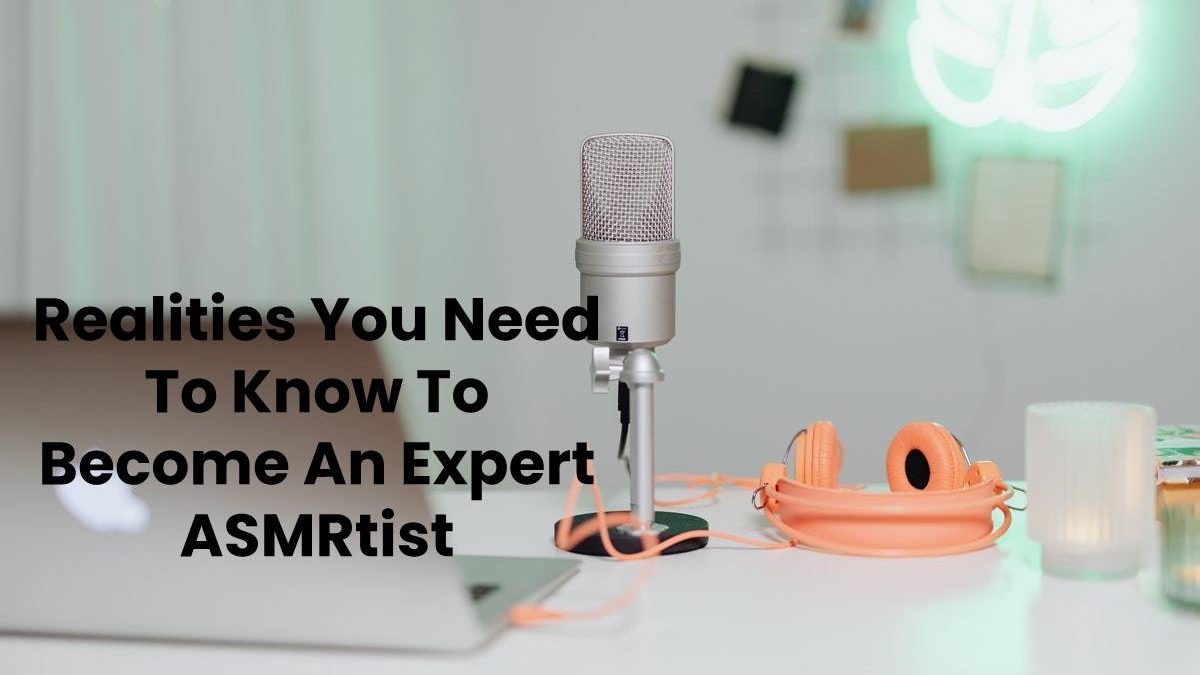Become An Expert ASMRtist
It was first known that ASMR (Longitudinal Autonomous Contact Response) is a clinical term, but during this time it became an important part of the music business. People love to hear and watch ASMR content. The content of ASMR is widely known in light of its emollient and laxative effects. People find it really useful in treating issues of psychological well-being such as frustration, tension, stress and disorders such as lack of sleep. This shocking effect that people want to feel is due to certain visual effects or sounds, and in this sense, professionals use their substance to create.
Experts address many issues in the development of their field. Proper equipment is an important factor in creating ASMR content. I’ve looked at some of the biggest problems many people face.
Table of Contents
Why is the microphone so noisy?
I have seen that various ASMR professionals are not very happy with the sound quality. They constantly complain and ask why their microphone is so violent. If you discover yourself in one of these, you might want to consider an additional amplifier that is mostly noiseless. The racket that the amplifier actually transmits is called self-falling or hissing.
If the mouthpiece level is accidentally 15 dB (A) or less, it is the perfect microphone for creating ASMR journals because it records the sounds needed by observers, not extra shocks.
If the thing doesn’t say a word about the excitement itself, the character’s ratio of noise or S / N is another factor that may prompt you whether it’s an amplifier for you or not. A microphone signal ratio of more than 80 dB is ideal and can only be done in the ASMR range.
Condenser or dynamic microphone?
There are two types of mouthpieces, most of which are called ASMR receivers. The order is made taking into account the relationship between self-sufficiency and power cries. The two kinds considered as ASMR microphones are; dynamic microphone and condenser microphone.
The condenser microphone is not designed to create ASMR content because it causes shocks and uses an external power source.
The dynamic microphone does not need external power supplies and is infinitely quiet. The less noise, the higher the quality. Therefore, this type of receiver has the right to be called an ASMR mouthpiece.
Should a binaural microphone be used to record ASMR binaural recordings?
There is no compelling motivation to buy a glittery new binaural amplifier to get a binaural sound that everyone knows and loves. You can get almost the same effect if you use two omnidirectional amplifiers and tune them to record the way you want.
Basically, you have to place two microphones a certain distance apart and use your favorite audio exchange program so that the amplifiers are recorded correctly – in other words, one gets one side and the other 50% of the sound.
It can take a couple of jobs to understand it properly, anyway, soon you’ll have your own unique binaural era studio – you don’t have to buy a binaural microphone yourself.
Anyway, keep in mind that you don’t actually get a copy similar to a certified binaural chronicle – but it’s close enough to anyone who isn’t an expert and has no idea of the qualifications.
If you need your more sensitive sounds, you need to wear something that has the shape of a head and identify the microphones that have ears. This can be much more complicated than paying, especially if you are just starting to work in the ASMR field.
Which power supply is better?
The receiver is connected to the power supply in two different ways. It has an XLR connector or a USB connector. Keep in mind that most microphones that use the XLR connection are connected to a recorder, which can then be connected to anything else you need: a camera, a cell phone, etc. USB connectors can be inconsistently connected accurately to your computer. Any USB connectors are open, but they cost little money.
It depends on you whether you want to record audio via a computer via a USB connection, or if you need to select an interface for different outputs using the XLR connector. It is worth remembering that the best amplifiers in the class have an XLR connector.
What kind of self-acceleration should be acceptable?
Another huge thing you need to think about ASMR receivers is how they handle noise. To clarify this quite clearly, the self-blast assumes that the receiver records its own voice as a dull, buzzing, basic sound.
Modest low-level microphones don’t sufficiently control self-distortion, and you either have to change it during recording after creation or just leave it there. That doesn’t mean you don’t have to be anxious about your ASMR accounts. Numerous people love the ASMR journals.
Of course, if you need to record sound triggers in the finest and cleanest method you can access, you need a mouthpiece that can only manage shocks.
The 15 dB (A) noise is brilliant and acceptable. It has no awful effect on the bill and is absolutely ordinary.
Do you need a sound system sound system?
The huge majority test the ASMR with headphones and are able to assess the effects of surround sound recording. The point that leads from one ear to another is common in ASMR journals, but this can be determined by storing separate left and right channels.
While you can create journals with grand effects using a high-quality microphone, a sound system microphone, or multiple microphones – this is a daunting task for any ASMRtist.
Wrapping Up
With all of the above, you can now suggest to your crowd exactly what you need. With a whole ASMR receiver, you won’t feel stressed due to hustle or bustle.

